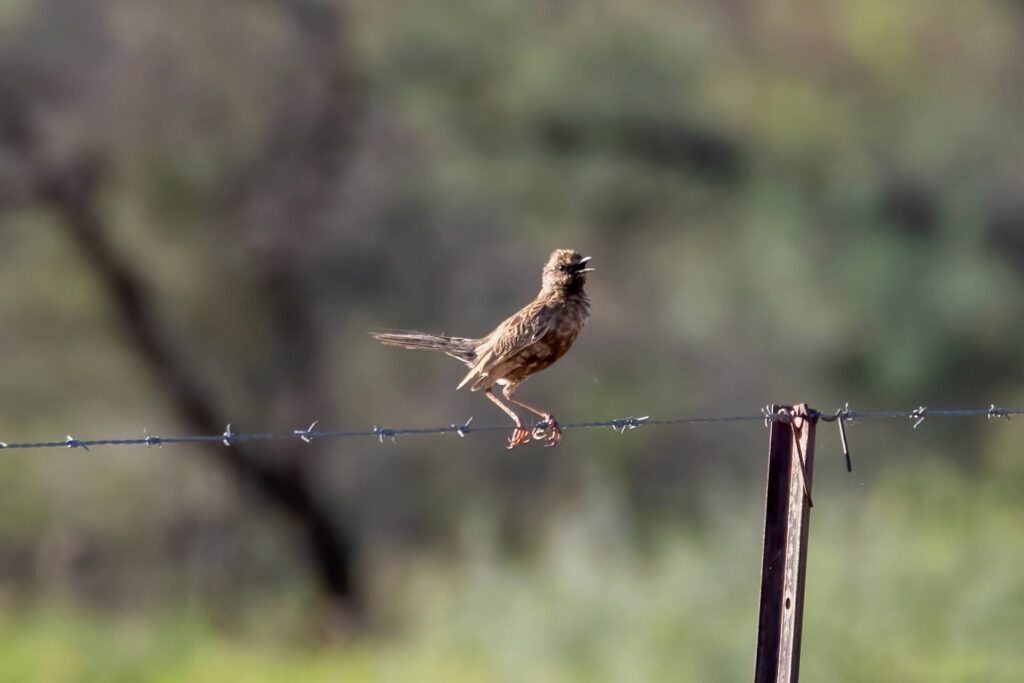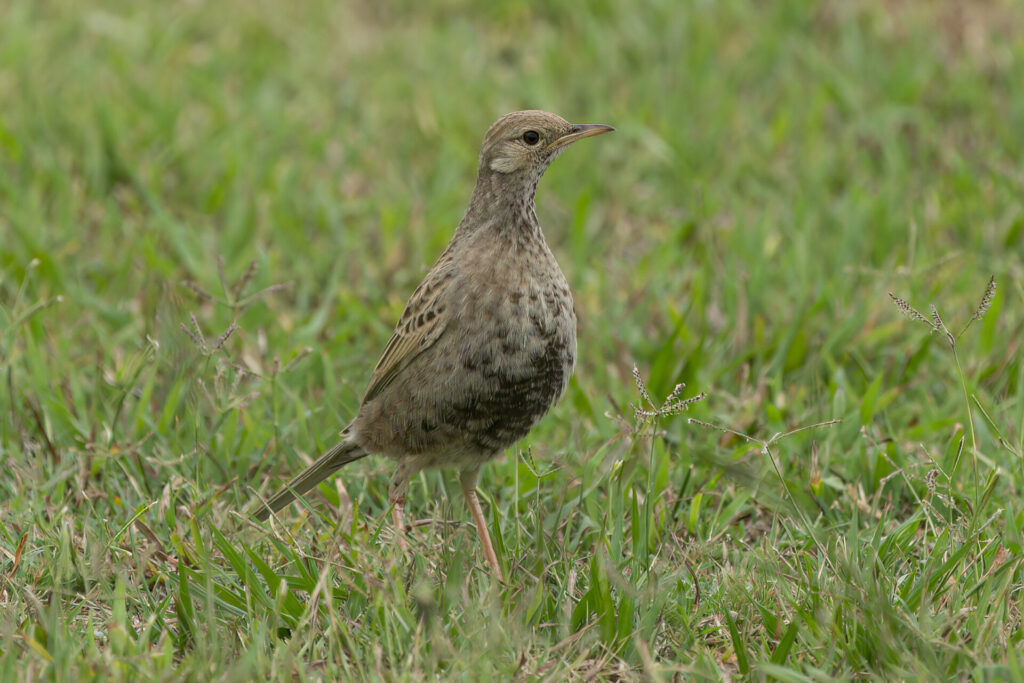
One of Australia’s loudest songsters, a male Brown Songlark broadcasts his rather metallic and mechanically repetitive song while flying slowly at a height of up to 50 m over the treeless or sparsely wooded semi-arid grasslands and chenopod shrublands that the species inhabits. This song advertises his occupancy of a territory that he aggressively chases rival males from, the audible extension of an arms race among males that has led the Brown Songlark, despite its drab brown appearance, to become one of the most unique birds on the planet for the extreme size difference between male and female. Males weigh in at more than twice the weight of females. During their evolutionary pathway it seems that heavier males managed to exclude lighter males from larger areas of the best nesting habitat, providing them the opportunity to adopt a polygamous breeding system. Males that manage to establish and defend high quality territories with the best nesting resources attract a harem of around five but up to ten females to settle and nest in their territory. Since the heaviest males monopolize breeding to pass their genes to the next generation there is strong selection for larger size among males.

This arms race has had consequences for the investments that females make in sons versus daughters. Male Brown Songlarks play almost no part in raising young, leaving the females to build a well concealed nest in the base of a small shrub or grass tussock, incubate the clutch of 2 to 5 eggs and raise the young on their own. Research by Michael Magrath and colleagues has shown that females must deliver 43% more prey items and expend 27% more energy on sons than daughters due to the greater energy demands of faster-growing sons. This disparity leads to the prediction that females should manipulate their investment in sons versus daughters to manage competition between them in the nest and favour the survival of daughters, the cheaper sex, when environmental conditions are poor. These predictions are supported. First, although male nestlings end up 60% larger than their sisters by the time they leave the nest, females lay larger eggs with more nutrition for female embryos so that they are larger than their brothers at hatching to give them a head-start. Second, this size advantage for females carries through until at least 5 days old meaning that if environmental conditions are poor and food is scarce, early sibling competition is likely to lead to greater mortality among males while they are still smaller early in the nestling period to skew the composition of the brood in favour of females that require less food.

Brown Songlarks are migratory within Australia, breeding mostly south of the Queensland/NSW border in spring and summer and moving to inland and northern Australia for autumn and winter. However, the timing of movements and the numbers of birds present in any part of their range are highly variable in response to rainfall, which is necessary to promote the good grass and shrub cover that the birds prefer. Furthermore, Brown Songlarks may be present in Queensland throughout the year and breed as far north as Richmond, suggesting there is more to learn about their breeding range. In Queensland, they are widespread west of the Great Dividing Range, generally only appearing east of the Great Divide when the west is in drought. An exception is a population that is resident and breeds in marine plain grasslands in the Rockhampton district from Broad Sound to the Fitzroy River delta, a habitat shared with the Capricorn Yellow Chat. This sedentary coastal population of Brown Songlark is so isolated from the inland areas visited by the main migratory population that it may have become genetically distinct.
REFERENCES
- Higgins, P.J. et al. 2006. Handbook of Australian, New Zealand and Antarctic Birds (HANZAB).
- Magrath, M.J.L. et al. 2003. Australian Journal of Zoology 51: 429-441.
- Magrath, M.J.L. et al. 2003. Behavioral Ecology and Sociobiology 54: 240-248.
- Magrath, M.J.L. et al. 2007. Journal of Animal Ecology 76: 1169-1180.
- Black, R.L. & Houston, W.A. 2013. Australian Field Ornithology 30: 14-21.


